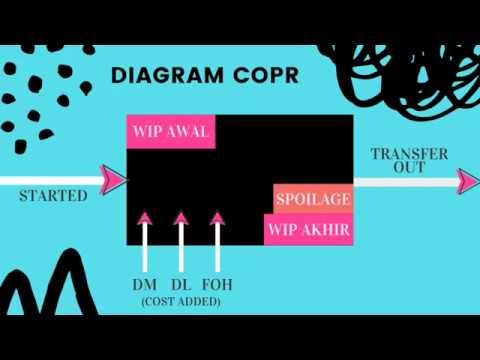
Ecommerce accounting automation setup and configuration can take as little as a day. Automation software that offers white glove onboarding will often configure your system within a day and walk internal financial staff through their normal processes. After the initial implementation is set up and users feel confident in day-to-day tasks, users generally start to leverage the software to generate unique and specific reports. This learning curve and level of comfort with new software depend on individual users. Software with customer support can help empower users to try new things and utilize new accounting capabilities more quickly. Ecommerce organizations have a unique advantage in accounting automation as most of their accounting information is already in a digital format.
A public policy graduate from King’s College London, she has worked as a journalist for an education magazine. Her work has been featured by Gartner and Careers360, among other publications. Swimming, doodling, and reading fiction are her happy distractions outside of work.
When should I start using ecommerce accounting automation?
If you’re opting to automate your accounting process, then obviously then the form of automation is crucial. There is little benefit in choosing to automate accounting but the software still requires heaps of manual work. When scanning the capabilities of the software, take care in ensuring that it has a viable solution to your main pain points. A lot of transactional information is dependent on how efficiently the bank processes the data. Some accountants rely on monthly bank statements and credit card ledgers to be able to analyze and validate transactions. Unfortunately, this process can become further complicated if there are any errors or delayed spotting of suspicious transactions.
All of this can be standardized in a template to ensure every step is completed for every new employee. Having an automated workflow for this purpose will ensure each step is covered every single time. You will then be able to divert these resources to high-value, output-focused tasks.
How to Get Started with Automated Accounting?
However, depending on the volume of your transactions, even month-end reviews can become a tedious task for accountants. The money you put into automating your accounting will end up saving you thousands of dollars that might get wasted on increased work hours, data correction, redoing lost work or mistakes. An error in accounting always comes with a price – and automating it can help eliminate that loss. Once accountants shift into this mindset, the value proposition of the accounting firm revolves around the human touch—and that makes for more rewarding work.

Digitize reconciliation processes, eliminate errors from workflows, and automate data extraction, freeing up analyst time to focus on more strategic work. Ensuring that your business financials are safeguarded is essential in a post-pandemic world. Payroll automation helps you save time on processing direct deposits, filing taxes, and generating payroll reports. Additionally, the software instantly calculates each type of employee payment – salaries, overtime or double-time charges, bonuses, raises, deductions, commissions, and even hourly wages. If your firm likes things the way they are, remember that automation can complement existing systems. You may look to implement one or two tools to help certain areas where there’s room for improvement.
Will accounting become automated?
They will all tell you the same thing — if it’s repeatable and scalable, then automation carries less risk than manual intervention. Additionally, another reason accountants should love automation is that it helps to create happier and healthier employees. Evaluating ecommerce accounting platforms is probably the toughest part of automating your accounting processes. • Properly integrating with sources like bank accounts, payroll tools and inventory software.
This means that with proper configuration, data entry can be completely eliminated. Ecommerce businesses can put away the ledgers and Excel reports and start focusing on optimization. But in recent years, it’s also become possible for employees to automatically fill out and route expense reports.

Depending on the software you opt for it, there can also be added features your automated accounting system may offer. It might even help you manage your payrolls, employee petty cash, or travel-related expenses. Most accounting software also takes into consideration that you might need to directly plug-in bank statements. Accounting automation tools essentially eliminate all manual aspects of an accountant’s job.
The Benefits of Accounting Technology
The automation software market is plentiful with comprehensive solutions for nearly every accounting need. The trick is to uncover what form of automation your business can benefit from the most. Sometimes expense reports are a matter of an employee submitting directly to accounting. Why have an operations manager or human resources employee stumbling over payroll every pay period? This can become a nightmare for companies as they grow, consuming vast resources to assure everyone gets paid on time.
Survey Finds Accountants’ Dream of Financial Transformation – GlobeNewswire
Survey Finds Accountants’ Dream of Financial Transformation.
Posted: Wed, 16 Aug 2023 13:00:00 GMT [source]
Accounts payable, accounts receivable, payrolls, fixed asset management, cash management and general ledger are some of the areas where accounting automation can help reduce manual effort considerably. It also helps in speeding up the entire process by ensuring accuracy at every stage of the process. Secondly, automation can provide companies with more accurate data and insights. Typically, manual business processes are prone to human error and tracking down these errors from manual entry wastes important time and money.
Bill Pay (Accounts payable)
Process individual, corporate, and partnership returns with timesaving tools, such as the Allocation and Apportionment module. With regards to technical dependency, possibly, but there are alternatives you can always jump to. For compliance, you can look at their security precautions and come to your own conclusions regarding your own appetite for risk. Avrohom Gotteheil has some interesting thoughts on how to leverage automation in the right places.
Stay abreast with current trends, accountants advised The … – Guardian Nigeria
Stay abreast with current trends, accountants advised The ….
Posted: Mon, 21 Aug 2023 01:21:00 GMT [source]
Some of these operations take more time in their actual execution instead of a focus on output. You never have to worry about data being lost or compromised ever again. Automated bookkeeping takes into consideration the integrity of your reports and data.
As the phrase suggests, a manual accounting system relies on paperwork and manual data entry. The higher the volume of data, the higher the chances of Accounting automation mistakes being made. Taking a look at some of the challenges of manual accounting will better help you understand why it’s important to solve them.
- However, when automation is implemented, bots can take over these tasks and give employees more time back – an estimated six or more hours per week even.
- Corporate credit cards can also be added to the expense tracking software to capture expenses and receipts automatically.
- The accounts teamwork is onboarded into a software that can perform functions ranging from simple to complex.
- On the other hand, you will have to learn the tricks of working with a powerful automation tool.
When selecting software, make sure you consider it’s compatibility with your existing tools and platforms. There are now a variety of applications that enable and implement this. Such tools usually allow us to link the relevant cloud applications on a central platform and define clear rules on when, how, where, how much data should be passed on and what happens to them. By connecting the right apps, you can automatically package KPIs and numbers into reports, charts and dashboards. If the software does not come with an onboarding option or your business has chosen a DIY route, installation and configuration can take a bit longer.
From there, they can build an automated workflow that will deliver the same results with little human intervention. I’ve spent my entire career in corporate finance and have seen firsthand how much time can be saved when you automate even a small component of your revenue accounting calculations. It requires every team to load all of their policies into a system, so that they are uniformly applied to each transaction. The potential time savings is invaluable If a revenue team can automate 80-90% of those transactions. Imagine in the above scenario if the data were automatically pulled from the bank statement and identified any discrepancies for targeted human review.
